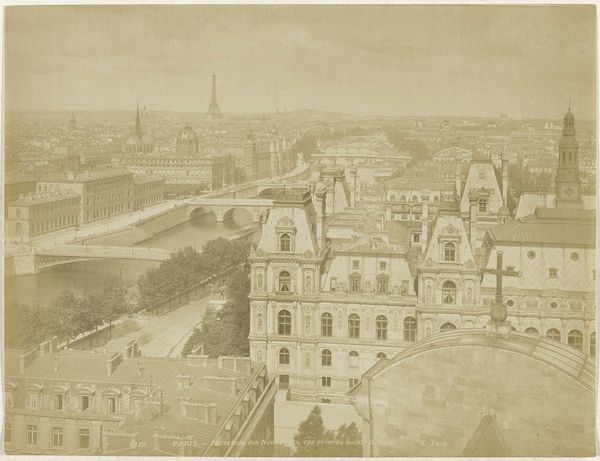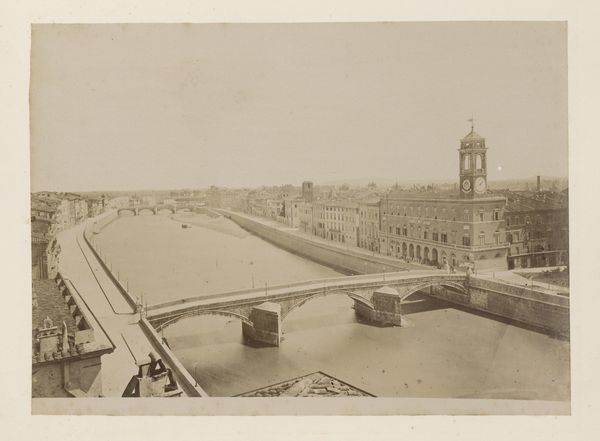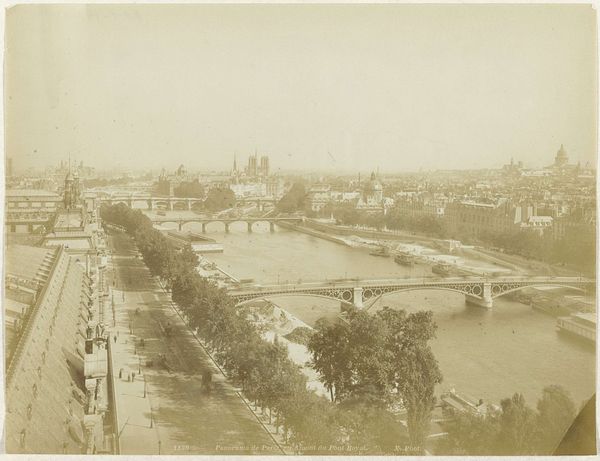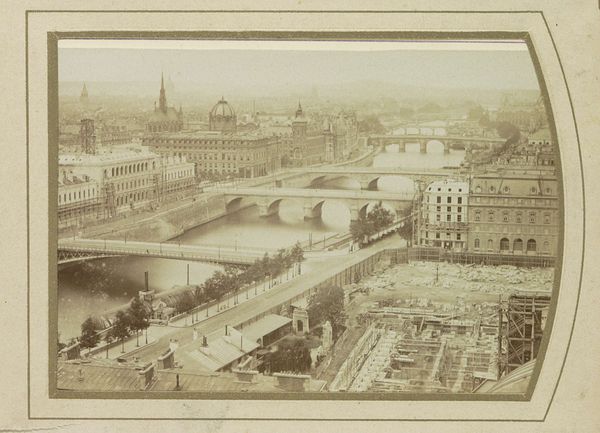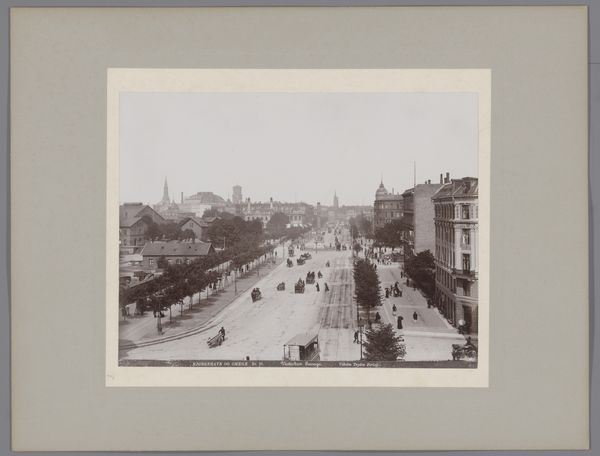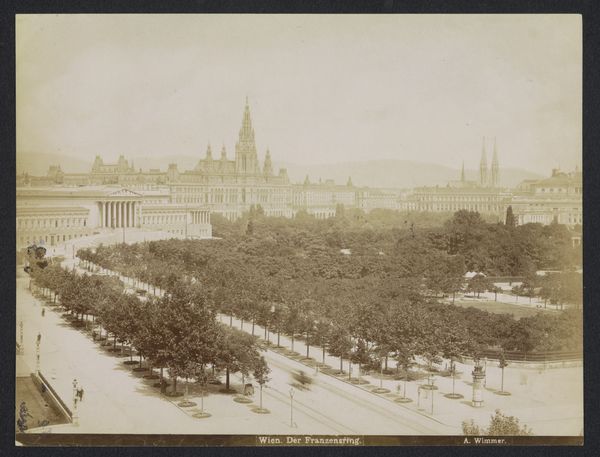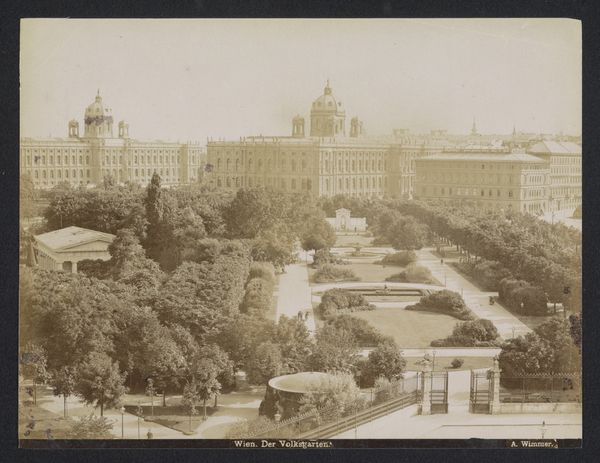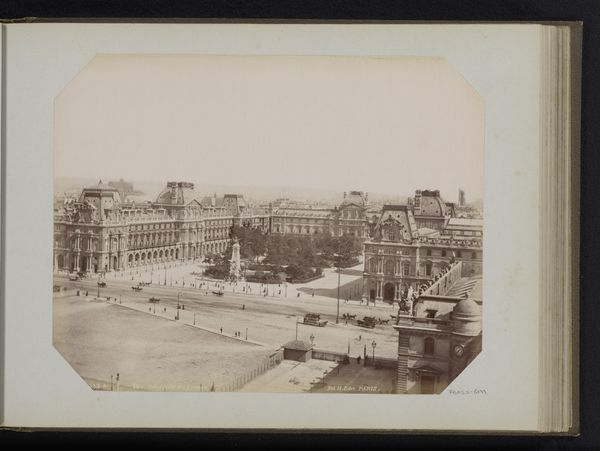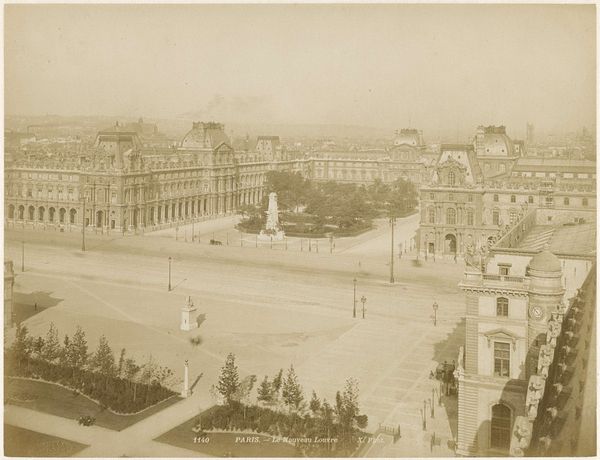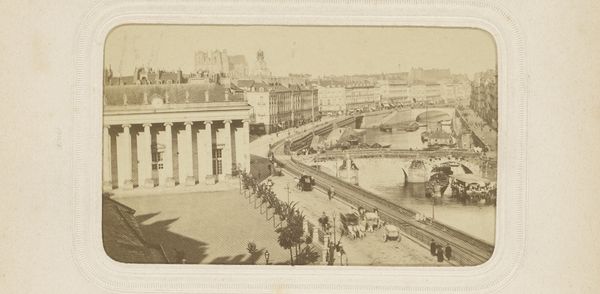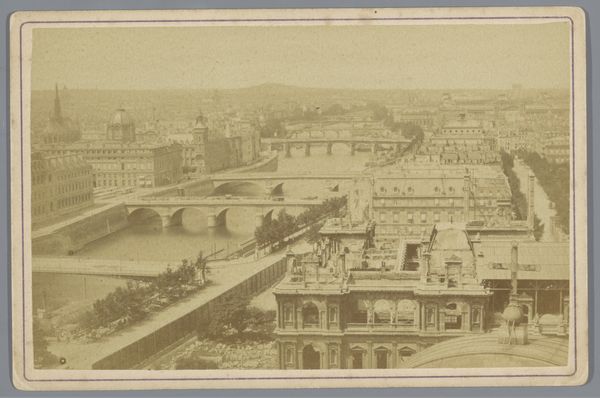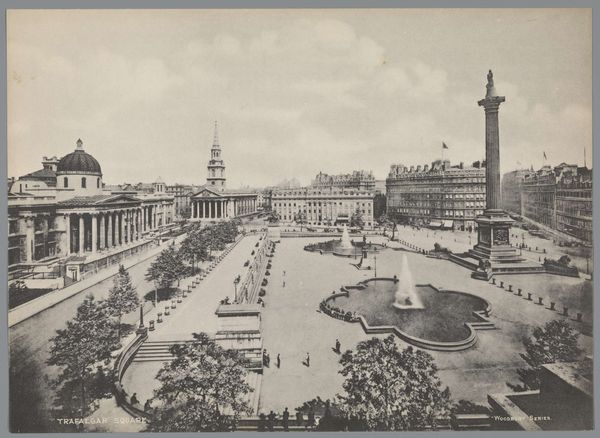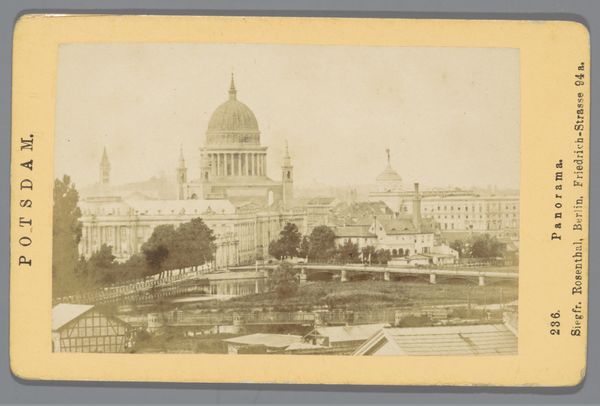
Dimensions: height 200 mm, width 263 mm
Copyright: Rijks Museum: Open Domain
This photograph by A. Wimmer captures the Elisabeth Bridge and Karlskirche in Vienna. Considered from a historical perspective, this image serves as a window into the socio-political context of late 19th-century Vienna. During this time, Vienna was undergoing rapid urbanization and modernization, reflected in the architectural achievements and infrastructure evident in the photograph. The construction of the Elisabeth Bridge, named after Empress Elisabeth of Austria, symbolized progress and connectivity within the expanding city. However, the image also evokes a sense of romanticism, as it captures the grandeur of the Karlskirche against the backdrop of a bustling cityscape. The church served as a symbol of imperial power and religious devotion, reflecting the complex interplay between tradition and modernity in Viennese society. By considering this photograph through the lens of intersectionality, we can examine how issues of class and privilege are embedded within its composition. The presence of horse-drawn carriages and well-dressed pedestrians suggests a privileged elite, while the absence of marginalized communities hints at the social inequalities prevalent during this period. The photograph therefore serves as a reminder of the complexities and contradictions inherent in Vienna's historical narrative.
Comments
No comments
Be the first to comment and join the conversation on the ultimate creative platform.
